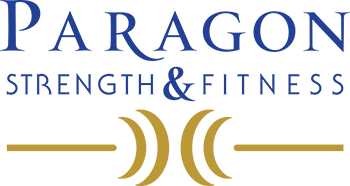What Is Sports Performance Training?
Anyone who regularly participates in a sport, whether as a weekend warrior or top athlete, understands the importance of fitness and training as it relates to how well they perform. However, training is not one-size-fits-all when it comes to improving athletic performance. This is where sports performance training comes in.
Sports performance training is designed to prepare an athlete for optimum performance in a specific sport. The purpose is to work on those things that will translate into improved performance for that sport. For example, a swimmer might perform movements that strengthen their shoulder’s muscular endurance, whereas a soccer player might utilize more lower-body exercises.
It differs from typical personal training in its focus. Rather than the goal of improving general fitness, sports performance training prepares an athlete to compete in their sport of choice. Sport training mimics the movements and skills required for a particular sport, and therefore will be different from sport to sport. Facilities like Paragon Strength & Fitness in Nashville, TN, offer comprehensive sport performance training for multiple sports.

What does athletic performance mean?
Athletic performance is the execution of specific physical routines or acts by an athlete while participating in a sport or activity. It is more than just movement; physiological and psychological factors also influence athletic performance. Often, the term is used in reference to attaining specific performance objectives over a period of time, whether throughout a game, a season, or a career.
What is sports training?
Sports training guides an athlete in preparing for their sport. It typically involves physical training, like building up strength, endurance, speed, agility, and improving skill levels. Training may also include psychological preparation, such as improving self-motivation, ambition, confidence, and resilience.
How does training improve performance in sports?
Performance in any sports is a result of proficiency in the physical motions required to participate. Regular training helps an athlete practice those motions until they become second nature, and then builds up the underlying skills so an athlete can perform better. Exercises and drills, coupled with weight training, help an athlete’s body to run faster, throw farther, last longer, hit harder, jump higher, etc.
What are the 5 training principles?
The human body is extraordinary. It is remarkably adaptable, yet resistant to change at the same time. A workout regimen helps your body to push its limits for better performance. The five training principles take this into account. They are:
1. Overload
To bring about positive changes in an athlete’s body, exercise overload needs to happen. The body adapts quickly to habitual levels and stresses and is happy to keep the status quo. This means that the training load must be adjusted to go above habitual levels. The intensity or volume in an exercise can be modified, or a new exercise that tests the same muscles can be added.
2. Specificity
The body acclimates to stress quite efficiently. Specificity imposes a specific type of stress on the body repeatedly and in a variety of ways. For sport performance training, the closer the training movements parallel the specific kinds of activity in the sport, the more effective the training will be in improving performance.
3. Progression
Because the body adapts so well, in order for results to continue improving over time, the training must progressively increase in intensity or duration. If this is not done, the body will stop building strength.
4. Variation
For consistent gains in sports performance, it’s helpful to keep the body guessing (in a manner of speaking). Adjustments in a training regimen have shown to yield greater results. Variation can be achieved by switching up intensity, duration, volume, and other important aspects.
One well-known application of training variation is training in phases: conditioning, intensive sport-specific training, in-season maintenance, and off-season upkeep.
5. Consistency
The human body is the ultimate example of “use it or lose it.” When athletes stop training, the benefits of training are lost—unfortunately, typically faster than they were gained. The detraining effect can be reversed after short rest periods once training is resumed. However, extended time away from training is harder to recover from. The principle of consistency requires that athletes stay engaged in their training.

What are the 5 types of training?
At the foundational level, we train because the body makes specific changes in response to the stress placed on it. These are the five types of training associated with the typical stressors placed on the body during sports.
1. Aerobic
Aerobic training targets the aerobic energy system and the cardiovascular system. Aerobic exercise is any type of cardiovascular conditioning that increases the delivery of oxygen to the muscles, improves the removal of waste products for all energy systems, and enhances the muscles’ ability to use the aerobic energy system. Combined, these benefits allow an athlete to perform at higher workloads for longer.
2. Anaerobic
Anaerobic training develops the two anaerobic energy systems, and in the process it often improves power, strength, and speed as well. Training involves brief, intense bursts of physical activity, like sprinting or weight lifting, where the oxygen demand surpasses the supply. Anaerobic exercise is fueled by energy stored in muscles through a process called glycolysis, which also produces lactic acid. Therefore, anaerobic training improves the body’s ability to remove lactate and allows the athlete to perform higher intensity activities longer.
3. Flexibility
Flexibility training focuses on increasing a joint’s range of motion (ROM). There are two types of ROM: active and passive. Active ROM is the mobility when an athlete contracts their muscles, while passive ROM is the range when an external force, like gravity, is used. Flexibility training usually targets active ROM, because greater flexibility allows the athlete to use correct technique and helps prevent injury. Increased ROM means a joint can move through a larger angle before experiencing a strain or sprain.
4. Strength
Training intended to improve an athlete’s strength is called strength training. Exercises cause large stress on the muscle being used, which causes minor muscle tears. The body responds by increasing the size of the muscle (hypertrophy) to increase strength so that the next time the stress is experienced it won’t cause as much damage. Strength training is suited to many sports, and can help prevent injury.
5. Skills
Skills training is focused on the specific movement required for a sport. Necessary skills for basketball will be different than those for running or what an athlete needs to play football. Skills training should be individualized, because every player’s skill level will be unique. Training will often include working on technique and sport-specific drills.
The best training programs, like those found at Paragon Strength & Fitness, will incorporate all five types of training, and may offer additional services like nutrition help or online coaching.
How to train for athletic performance
The average sports participant can see improved athletic performance by incorporating some basic principles into their training. When it comes to how to train for athletic performance, keep the following guidelines in mind:
Be Consistent
Since the body quickly loses gains when you stop training, it’s important to keep a consistent training routine, even if it’s just to maintain the fitness an athlete has worked so hard to achieve.
Switch Things Up
Routines are great to keep people going to the gym, but it can be all too easy to fall into a rut. If an athlete does the same thing every week, then their performance will plateau because their body has learned how to be the most efficient at those things.
Drink More Water
It’s crucial to drink enough water for muscles to function optimally during training and when playing a sport. Dehydration will negatively impact athletic performance.
Incorporate Elements of All Training Types
Training will be more beneficial when it includes the different types of training: aerobic, anaerobic, flexibility, strength, and skills. Each plays into overall athletic performance.
How do athletes train for improved performance?
Competitive athletes understand that more goes into improved performance than just hitting the gym, although that is a major component. When they do participate in what most people think of as “training,” athletes usually approach it purposefully. They have a plan and they know why they are doing certain exercises, what they hope to gain, their performance goals, and they track their progress over time.
Nutrition also plays a large part in improving performance. There is no one-size-fits-all diet plan for athletes; everyone’s body is different. When an athlete takes the time and effort to find out how their body reacts to the nutrients they consume, they have the building blocks ready to maximize training and game-time performance.
Training for improved athletic performance includes an understanding of the importance of rest as well. Athletes will plan time for rest in addition to active training, because the body needs recovery time. Sleep is also essential for the body to repair muscles and replenish energy stores. Athletes will carve out time for proper sleep during training as well as competition season.
How does training improve performance in sports?
While all athletes will see some improved performance with any level of training vs. none at all, those who follow sports training programs typically enjoy greater gains. Training that is specifically tailored for the demands of their sport can help athletes enjoy benefits that include:
- Increased speed
- Improved conditioning
- Increased agility
- Improved balance and body awareness
- Increased strength
- Injury prevention
- Increased flexibility
- Improved endurance
- Quicker recovery
- A competitive edge
- Increased acceleration and power

What is high performance training?
High performance training is designed to improve the skills and performance of athletes participating at a high, or elite, level. High performance athletes typically compete to win prestigious competitions, not just to participate. Olympic athletes, college athletes, and those who compete in World Games would fall under the high performance category.
High performance athletes follow comprehensive training programs to achieve their full potential in the sporting arena. High performance training may include dietary and nutritional planning as well as sports performance training.
What is a sports performance coach?
A sports performance coach has knowledge in all of the related aspects of athletic performance—strength, movement, recovery, nutrition, flexibility, energy system development, etc. Their goal is to increase the level of performance, which often includes focusing on both psychological and physical preparation.
It is especially helpful if a performance coach is also highly proficient in the sports they teach, so they truly understand what athletes go through. Performance coaching is increasingly popular in professional sports because of heightened intensity and pressure on athletes to perform well.
What is the purpose of training programs in sport?
Sports training is a typical part of an athlete’s life. Training helps condition the body to perform well while participating in a sport and plays a large role in preventing injury. Almost every athlete who is more serious than the occasional “jump in on a game” player follows some type of training program.
Training programs do more than help achieve peak performance, though. Athletes gain more knowledge of their sport, learn mental resilience, and better understand the importance of having a healthy mind and body. In addition, sports training improves concentration, enhances learning abilities, and fosters better thinking and problem-solving skills. The regular physical activity with training can safeguard against depression and help reduce stress as well.
Get More From Your Training
Start reaping greater rewards from your training with the help of the best personal trainers in the Nashville area, who will tailor a plan just for you and your goals. Contact Paragon Strength & Fitness to start your life-changing journey today.

